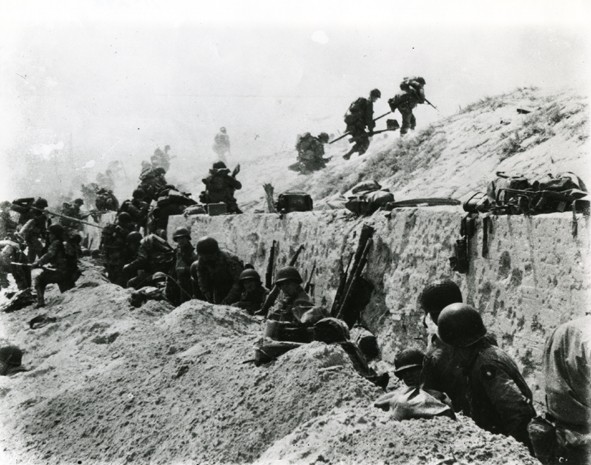Utah Beach was the codename for D-Day’s westernmost landing beach. Here the U.S. 4th Infantry Division came ashore with the task of establishing a bridgehead at the base of the Cotentin peninsula. This was an important assignment in the effort to seize the deep-water port of Cherbourg as quickly as possible.
Five hours before the first seaborne landings, U.S. airborne troops were dropped behind the coastal defences. Fighting their way towards the beach, they cleared the enemy positions that threatened the Allied exit from the beaches. The paratroopers managed to prevent any significant counterattacks.
The German strongpoint on the beach of La Madeleine was composed of various shelters and bunkers, a grenade launcher and four canons assigned to cover an antitank zone. These modest defences could not withstand the terrible air and naval bombardments of D-Day. They offered little resistance to the American assault forces, even though many units landed nearly 2000 metres to the southeast from the original plan.
At the end of the day, the assault was a total success, with relatively few American casualties. Because the Germans had destroyed almost all port facilities along the Atlantic coast, the beaches had to take over their crucial logistic role. From June to November 1944, an almost endless stream of men and supplies were brought in via Utah Beach.
On 11 November 1944 a monument was dedicated to the 1st Engineer Special Brigade on the site of the La Madeleine strongpoint, making it the first war memorial established on the landing beaches.
